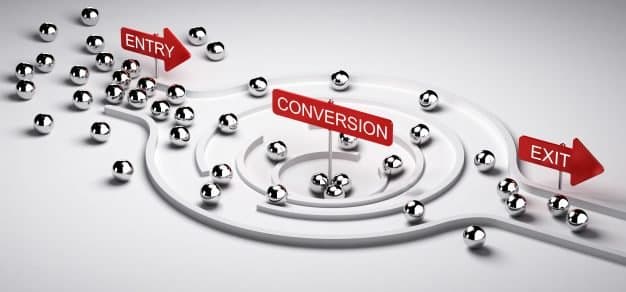Businesses aim to boost online sales and enhance customer engagement in the fiercely competitive realm of e-commerce. Conversion Rate Optimization (CRO) is one of the best strategies to do this. Increasing the proportion of website visitors who complete desired actions, such as buying something, signing up for a newsletter, or completing a contact form, is the main goal of CRO. Businesses may dramatically raise their conversion rates and, eventually, their revenue by improving the user experience, making design adjustments, and applying data-driven methods.
AI marketing tools and e-commerce marketing tactics have completely transformed the way businesses apply CRO in today’s digital environment. These tactics and technologies, which range from predictive analytics to personalized user experiences, can assist companies in making better decisions that will increase performance and generate conversions. This article will cover the principles of CRO, the function of AI marketing tools, and how e-commerce companies can use them to maximize their conversion rates.
What is Conversion Rate Optimization (CRO)?
Conversion rate optimization is the process of improving a website or landing page to increase the proportion of visitors who complete a specific action. These activities, referred to as conversions, can change based on the objectives of the company. Typical conversion instances are as follows:
- Purchases: This is the most crucial conversion action for e-commerce websites.
- Lead generation: Getting contact information for a follow-up sales or marketing campaign.
- Signing up for a newsletter: Involving clients with frequent promos and updates.
- Account Creation: Encouraging users to register for services or create accounts.
Converting your current traffic is the goal of CRO, not bringing in new ones. Your bottom line can benefit greatly from even a slight improvement in conversion rates. For example, even in the absence of an increase in traffic, a 2% improvement in conversion rate can have a significant effect on income.
Why is optimizing conversion rates important?
Any e-commerce business must increase traffic, but this is insufficient on its own. Your business won’t expand if the visitors don’t become paying clients. CRO becomes crucial in this situation.
You are maximizing your current audience by increasing the conversion rate of your website.
CRO is essential for the following reasons:
- Maximizing ROI: Improving the efficacy of your marketing initiatives is the main objective of CRO. You concentrate on getting greater value out of your current visitors rather than trying to obtain additional traffic. This raises your marketing spend’s overall return on investment.
- Cost-Effective Growth: Using paid advertisements, social media campaigns, or SEO techniques to draw in new visitors frequently entails significant expenses. You may expand your business without spending more money to get traffic by increasing your conversion rate.
- Better User Experience: CRO aims to enhance the user experience in addition to boosting sales. Optimizing your website increases the likelihood that visitors will convert by making it easier for them to find what they’re looking for.
- Data-Driven Decisions: Data is the foundation of CRO. Businesses can make data-driven decisions that produce better outcomes by examining user behaviour and A/B testing various web page versions.
Crucial CRO Techniques for Successful E-Commerce
Multivariate testing and A/B testing: Comparing two distinct iterations of a website to determine which converts better is known as A/B testing. To find out which headlines, photos, or CTA buttons get the most hits, for example, you may test them out. By testing several variables simultaneously, multivariate testing goes one step further. You may improve your website and increase conversions by using the insightful information these tests give you about what works and what doesn’t.
- Boost Site Speed: Pages that take a long time to load might significantly reduce conversions. According to research, a one-second lag in page load time might result in a 7% decrease in conversions. One easy yet powerful method to increase your conversion rate is to optimize the performance of your website.
- Simplify Navigation: A website with a high bounce rate may be cluttered or unclear. Simplify the navigation on your website so that users may quickly locate the products or information they need. Clear search options, filters, and categories make it easier for visitors to explore your website and increase conversion rates.
- Strong Calls to Action (CTAs): One of the most important aspects of the conversion process is your CTAs. Make sure your calls to action are obvious, appealing, and simple to locate. Use phrases like “Buy Now,” “Sign Up Today,” or “Learn More” that are action-oriented and clearly communicate what you want people to accomplish.
- Personalization: In the current e-commerce environment, personalized experiences are becoming more and more significant. Offering tailored content, discounts, and product recommendations will make the user experience more interesting and boost conversions. Email marketing efforts can also be personalized by sending people offers that are specific to their past actions.
To learn more about how Google Analytics addresses hidden product listings in e-commerce, check out our guide on E-Commerce Fix: Google Analytics Tackles Hidden Product Listings.
AI Marketing Tools’ Function in CRO
Businesses’ approach to CRO is changing as a result of AI marketing solutions. Businesses may use artificial intelligence to analyze massive databases, forecast consumer behaviour, and produce individualized experiences on a wide scale. AI marketing solutions can improve CRO in the following ways:
- Predictive analytics: AI systems are able to examine user behaviour and forecast which website visits are most likely to become customers. This enables companies to focus their efforts on high-value leads, such as sending customized emails or providing users who are about to make a purchase with exclusive offers.
- Chatbots and Virtual Assistants: AI-driven chatbots are able to interact with users in real time, responding to their inquiries and helping them make purchases. Chatbots decrease friction and increase conversion rates by providing prompt support.
- Customized Suggestions: AI systems are able to monitor user activity and make product recommendations based on their previous purchases or browsing history. In addition to improving the shopping experience, personalized product recommendations raise the possibility of a conversion.
- Dynamic material: AI has the ability to change website material on the fly in response to user activity. For instance, the website can display additional products in a particular product category when a user returns if they have previously expressed interest in that category. Increased engagement and conversion rates may result from this degree of customisation.
- Automated Email Campaigns: AI is able to divide up email lists according to user activity and deliver timely, relevant, and customized messages. Lead nurturing and conversion can be aided by automated emails that include personalized discount offers or reminders for abandoned carts.
Using E-Commerce Marketing to Increase CRO
Increasing conversion rates is mostly dependent on e-commerce marketing. An effective e-commerce marketing plan can raise the possibility of conversions and bring in more relevant visitors to your website. E-commerce marketing can help with CRO in the following ways:
- Focused Advertising: Develop highly focused advertising campaigns by utilizing data from your clientele. You may target particular demographics with platforms like Google adverts and Facebook Ads, making sure that the people who are most likely to convert see your adverts.
- Social Proof: Adding user-generated content, client endorsements, and reviews to your website can boost credibility and trust. More conversions may result from visitors being reassured by positive evaluations and social proof that your goods and services are of a high caliber.
- Email marketing: One of the best e-commerce marketing strategies is still email. You may keep prospective clients interested and urge them to finish their purchases by sending them tailored emails based on their usage patterns. Conversions can be further increased by providing special discounts or free shipments.
- Retargeting Campaigns: Visitors who have already interacted with your website but did not finish a purchase receive retargeting advertisements. These ads remind users of the items they have seen and may persuade them to come back and complete the purchase.
- Optimized Product Pages: Make sure your product pages are attractive and have all the details a buyer needs to make an informed selection. Conversion rates can be raised with the use of clear price information, thorough descriptions, and excellent photos.
Conclusion
The process of conversion rate optimization is continuous and necessitates continuing monitoring and modification. Businesses may make better judgments, provide individualized experiences, and eventually boost conversion rates by utilizing AI marketing tools and putting efficient e-commerce marketing techniques into practice. The aim is always to make the most of your current traffic, whether you achieve that through A/B testing, enhancing website speed, or utilizing predictive analytics.
CRO is a must in the cutthroat internet market of today, not simply a nice-to-have. By implementing the appropriate tactics and resources, you can optimize your website for success, convert more visitors into devoted clients, and foster long-term business growth.



